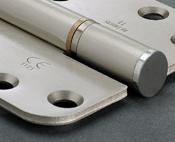

LONDON: The Guild of Architectural Ironmongers (GAI) is committed to maintaining, supporting and advancing the highest standards and best practice in the specification and scheduling of door hardware.
The correct CE Marking of door hardware is central to this and the GAI is urging specifiers to ensure that the hardware they specify carries a valid CE mark and to ensure that they are aware of how to check and validate the authenticity of CE Marking documentation.
CE Marking has long been a source of confusion for specifiers as the situation continues to change and evolve across Europe. CE Marking of many items of ironmongery has been the established practice in the UK for almost ten years. It is the result of an EU Directive – The Construction Products Directive which, in terms of ironmongery, covers:
CE Marking is essential for the door hardware for fire, smoke and escape doors since it is a criminal offence to supply products that do not comply with the UK Construction Products Regulations.
“CE Marking remains the easiest way to show that a product complies with the essential requirements of the Construction Product Regulations,” says the GAI’s Gary Amer. “Specifiers should make themselves aware of what information to ask for, and how to read the certificates / declarations they receive from manufacturers. It is also essential that manufacturers maintain their CE certification correctly in order that the system continues to operate correctly and retain the confidence of users.”
Specifiers looking for further guidance on the complex area of CE Marking should consult a qualified Architectural Ironmonger. A full list of member companies of the GAI is available at www.gai.org.uk.